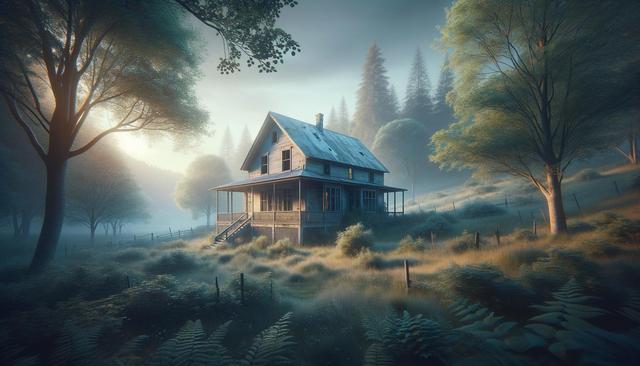The Story Behind Abandoned Houses
Every abandoned house has a story. Sometimes, these structures are left behind due to financial hardship, inheritance disputes, or family relocation. Over time, neglect turns them into eerie, empty shells. Yet, beneath the dust and silence lies the potential for transformation. Understanding what happens to abandoned houses begins with recognizing how they fall into disrepair. In many cases, mortgage foreclosures or unpaid taxes result in properties being seized and left unattended. Without maintenance, they quickly deteriorate.
However, not all abandoned homes are lost causes. Some are simply waiting for someone to see their value. Local governments often keep track of these properties, and in some areas, they may even be available at affordable prices through auctions or special programs. Before purchasing, it’s essential to research the legal status of the home, as some may still have unresolved ownership issues or liens that need to be cleared.
The Challenges of Restoring Abandoned Homes
While the idea of renovating an abandoned house is appealing, it comes with its share of challenges. First and foremost is the issue of structure. Time and weather can severely compromise the foundation, roof, and walls. Buyers should always conduct a thorough home inspection before making any commitments. A licensed inspector can provide a detailed report on the condition of the home and estimate the cost of repairs.
Common issues found in abandoned houses include:
- Mold and water damage
- Pest infestations
- Asbestos or lead-based paint
Beyond structural concerns, potential buyers may face zoning restrictions or historical preservation regulations, depending on the location. These can influence what types of renovations are allowed and how the property can be used in the future.
Opportunities for Creative Renovation
Despite the hurdles, abandoned houses offer unique opportunities for creative renovation. Many of these properties feature original architectural details that are difficult to find in modern construction—such as antique woodwork, vintage tiles, and ornate moldings. With careful restoration, these features can become the focal point of a revitalized home.
For those with a passion for design and renovation, an abandoned house can serve as a blank canvas. Whether turning it into a primary residence, rental property, or a community space, the possibilities are diverse. Some homeowners choose to engage with local architects and contractors who specialize in restoring older buildings. This not only ensures quality work but also helps preserve the character of the original structure.
Creative uses might include:
- Transforming the property into a bed and breakfast
- Converting it into a co-working space
- Creating a studio or gallery
Each approach adds new life to these once-forgotten homes while enriching the local community.
The Role of Communities and Local Governments
Communities play a significant role in determining what happens to abandoned houses. Some neighborhoods organize volunteer clean-up efforts to maintain the appearance of vacant properties and discourage vandalism. Others work with local governments to identify and rehabilitate these homes, turning them into affordable housing or community centers.
Municipalities often have programs aimed at addressing urban blight, which may include:
- Tax incentives for buyers who restore vacant properties
- Grants or low-interest loans for renovation work
- Partnerships with non-profits to develop housing solutions
By working together, residents and officials can turn neglected spaces into functional, attractive assets. This collaborative effort helps reduce crime, increase property values, and improve overall quality of life in the area.
Things to Consider Before Buying an Abandoned House
If you’re thinking about purchasing an abandoned home, it’s important to be prepared. Start by checking public property records to determine the legal owner and any outstanding debts. Then, assess whether you have the time, budget, and skills—or access to professional help—to take on a renovation project of this scale.
Here are a few steps to guide your decision:
- Visit the property and inspect its surroundings
- Obtain a full home inspection report
- Consult with contractors and legal experts
- Research local real estate market trends
Patience is key. Renovating an abandoned house can take months or even years, depending on the extent of the work. But for those willing to invest the effort, the rewards can be substantial—both financially and personally. The process often leads to a stronger connection with the home and a deeper appreciation for its history.
Conclusion: Seeing the Potential in Forgotten Places
Abandoned houses may appear lifeless at first glance, but they hold remarkable potential for those willing to look beyond the surface. With thoughtful planning, community support, and a clear vision, these forgotten structures can be transformed into vibrant homes once again. Whether you’re a first-time buyer, an experienced renovator, or someone passionate about preserving history, exploring the possibilities of abandoned properties opens the door to creativity, sustainability, and meaningful investment.




Leave a Reply